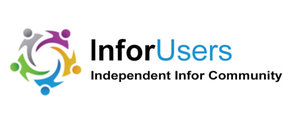The Problem: Teleheath Visits without Supporting Patient Vital Signs
I’ve conducted two telehealth visits with my care providers over the last month. My annual physical visit started with a nurse validating my medications and any current health challenges. The PCP then reviewed my health status with me to determine whether I had any issues. I didn’t, so the next step was to complete my lab orders by visiting a reference lab. Once lab tests were completed, I received email notifications of test results that were in my medical record in the PCP’s EHR. My tests were all normal, so I was good for another year.
My second telehealth visit was with a specialist I’ve had for over 12 years. He has been conducting telehealth visits for two years and is an evangelist for using telehealth. In this session, he couldn’t get the video to work, so we had an audio exam. Again, a review of the latest test results from the annual physical were used to evaluate my status. All results were normal, and I had no challenges with my chronic condition.
What was missing from each of these telehealth exams? My vital signs that would have normally been captured during an office visit were not measured—blood pressure, pulse, O2 saturation, height and weight, and temperature. My results are usually normal, so I have no worries about the lack of this information. But think about the value of the vital signs for potentially assessing early COVID-19 infections. Just to be clear, each physician specifically ended the telehealth exam with directions for getting additional help if I were to experience COVID-19 symptoms.
The Solution: IoT Gateways for Capturing and Aggregating Patient Monitoring Data
IoT gateways are being used to consolidate the data from remote patient-healthcare-monitoring devices in Asian countries[1] with a partnership between Cassia Networks and VivaLNK. The Asian implementations are based on connecting remote monitoring patient devices in an enterprise to help lessen the exposure of caregivers to the COVID-19 virus. Cassia Networks can accommodate the linkage of patient monitoring devices via Bluetooth to a gateway that can share the data with healthcare providers.
Large technology vendors such as Cisco, Hewlett Packard Enterprise, Dell, and Microsoft are providing IoT gateways as edge servers. Large healthcare provider organizations should begin to assess how to use the IoT gateways to connect to remote patient monitoring devices to better support telehealth.
One future scenario could be a smart home device connecting to the digital patient monitoring devices to capture vital sign data via Bluetooth networks. Once captured, this data could be aggregated and provided to the healthcare provider EHR via the IoT gateway edge servers.
In lieu of capturing data via smart home devices, healthcare providers could provide IoT gateways to patients with chronic health conditions to gather a constant stream of healthcare data that can be used to improve care quality and outcomes. It is also conceivable that patient smartphones could be used to capture, aggregate, and transmit the patient monitoring data to the provider EHR.[2]
The Justification: Improve Telehealth Services with Patient Monitoring Data
A clear gap in the telehealth services I’ve participated in is the inability to capture and share my current vital signs with my provider for review during the exam. This data may not be necessary for a patient in good health, but it could be critical for patients with chronic health conditions that are not in control. The ability to capture data from monitoring devices will provide a significant benefit for provider organizations that are participating in capitated population health contracts. The ability to capture temperature readings from patients will also assist in the effort to control and contain COVID-19.
The Players: Large Tech Companies May Mitigate IoT Solution Risk
Using IoT solutions from established technology companies may accommodate the expansion of a currently used provider vendor in the IT network environment. Using the following IoT solutions from representative technology companies will mitigate the risk for enabling more advanced telehealth services:
Success Factors
- Select an IoT gateway from the current network vendor used by the provider if the vendor has demonstrated good product and support performance.
- Evaluate how to use smartphones as IoT gateways to ensure broader access to patients who need remote monitoring. Provisioning of these devices must be fail-safe for the patients.
- Evaluate providing IoT gateways to high-risk patients to reduce ED visits and admissions while improving quality of care. These devices could be installed by homecare providers.
Summary
Telehealth visits are likely to have a key gap for providing a patient exam or evaluation that is comparable with a physician office visit—capturing and sharing real-time or near real-time data on patient vital signs. While this data may not be needed for a patient with good health, it would be key for assisting physicians in the examination of chronically ill patients that may have unstable health.
IoT gateways provide a solution for capturing data from digital patient monitoring devices with several communication protocols (e.g., cellular, Bluetooth, WiFi). The ability to capture patient vital signs and diagnostic data (e.g., glucose levels or EKGs) from digital devices will enable telehealth services to further advance the benefits of these services for both patients and physicians.
At some point in the future, it is conceivable that smart home assistants (e.g., Alexa, Google Home, Apple Go) and smartphones could be enabled to capture, aggregate, and share patient clinical data with providers at any time. Imagine how healthcare will improve!
[1] https://www.mobihealthnews.com/news/asia-pacific/sphcc-employs-iot-tech-and-wearable-sensors-monitor-covid-19-patients
[2] https://www.embedded-computing.com/embedded-computing-design/your-smartphone-could-double-as-an-iot-gateway Photo Credit: Adobe Stock, Proxima Studio


